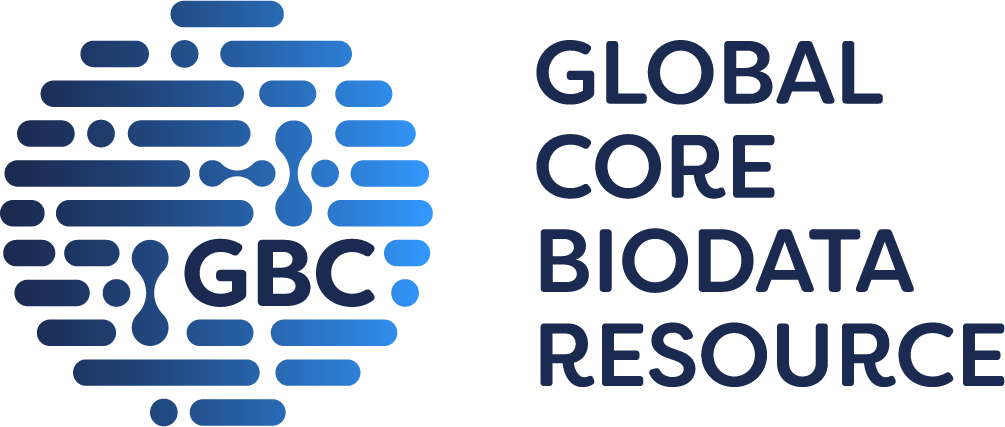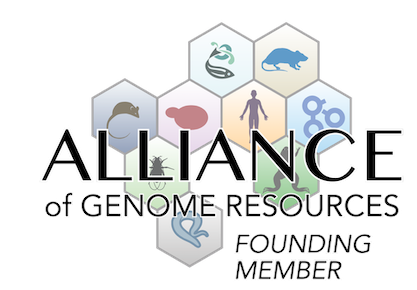immune system
|
N |
• at 6-8 weeks of age, mice show no alterations in organ weight or total cell counts in the spleen, peripheral lymph nodes, and bone marrow; analysis of the T cell compartment in spleen shows normal T cell development and distribution into naive, effector, and memory subsets in the periphery
|
|
|
• in a model of CD4+ T-cell-mediated colitis, Rag2-null mice receiving naive Arl4d-deficient splenic CD4+CD25-CD62Lhigh T cells show less weight loss and lymphocytic infiltration with a significantly lower colon weight-to-length ratio and colon inflammation score than mice receiving wild-type T cells at 7 weeks after transfer
|
|
|
• in vitro, naive splenic CD4+ T cells convert more efficiently into induced Foxp3-expressing regulatory T cells (Foxp3+ iTreg) in the presence of anti-CD3epsilon + TGFbeta
• enhanced conversion into Foxp3+ iTreg cells is associated with a significantly higher % of phosphorylated STAT5 (pSTAT5)-expressing cells within the CD4+ T-cell population, but no change in the level of pSTAT5 on a per-cell basis
• increased iTreg induction is lost upon stimulation with anti-CD3epsilon + TGFbeta in the presence of exogenous IL-2
• in vitro differentiation into T helper subsets TH1, TH2, and TH17 is normal, as measured by Tbx21/T-bet (TH1), Gata3 (TH2), and Rorc/Rorgammat (TH17) expression and signature cytokine production (TH1: IFN-gamma and TNF-alpha; TH2: IL-4 and IL-13; TH17: TNF-alpha and IL-17) after restimulation with PMA + ionomycin
|
|
|
• 6 and 8 days after infection with an OVA-expressing adenovirus (AdGOL), both the percentages and absolute numbers of CD8+CD127-KLRG1+ short-lived effector cells (SLECs, terminally differentiated effector cells) within the transferred Arl4d-deficient OT-1 T cells are significantly increased in blood
• moreover, 8 days after AdGOL infection, absolute numbers of CD8+CD127-KLRG1+ SLECs within the transferred T cell population are also significantly increased in the liver and spleen
|
|
|
• mice exhibit a significant increase in the % of pSTAT5-expressing CD4+ T cells and absolute numbers of circulating Foxp3+ CD4+ Treg cells per uL of blood
|
|
|
• in vitro stimulation of splenic CD4+ T cells with plate-bound anti-CD3epsilon in the presence of TGFbeta results in a significantly higher % of CD25+Foxp3+ cells within CD4+ T cells, consistent with enhanced conversion into Foxp3+ iTreg cells
• in vitro stimulation of CD25high depleted splenic CD4+ T cells with anti-CD3epsilon + TGFbeta results in a significantly higher % of Foxp3+ cells within CD25+CD4+ cells
• % of CD25+Foxp3+ cells within CD4+ T cells is normalized upon stimulation with anti-CD3epsilon + TGFbeta in the presence of exogenous IL-2, suggesting that altered IL-2 availability promotes iTreg conversion
|
|
|
• ex vivo splenocytes incubated with increasing concentrations of rhIL-2 show a small but significant decrease in the % of pSTAT5+ cells in conventional CD4+ T cells and CD8alpha+ T cells along with a marginal increase in the % of pSTAT5+ cells in CD4+Foxp3+ Treg cells
• however, ex vivo-sorted Foxp3+ Treg cells mixed with CFSE-labeled wild-type CD4+ T effector cells in the presence of nti-CD3epsilon/anti-CD28 show a normal capacity to inhibit CD4+ T-cell proliferation, and both ex vivo-isolated Treg and in vitro-induced Treg cells show unchanged expression of suppressive molecules, indicating normal Treg suppressive function
|
|
|
• when equal amounts of sorted CD8+CD62LhighCD44low Arl4d-deficient (CD45.1) and wild-type (CD90.1) naive OT-1 CD8 T cells are co-transferred into congenic recipients and assessed upon infection with an OVA-expressing adenovirus (AdGOL), Arl4d-deficient CD8+ T cells show enhanced expansion, leading to a ~80% contribution to the total population of transferred CD8+ OT-1 T cells in circulating blood on day 8 after AdGOL infection
• 8 days after AdGOL infection, the percentage of transferred Arl4d-deficient OT-1 T cells within the total CD8+ T cell population is also significantly increased in the spleen and liver (primary infection site)
• after AdGOL infection, Arl4d-deficient CD8+ T cells show greater expansion of effector cells, more pronounced differentiation into KLRG1+CD127- short-lived effector cells (SLECs), and enhanced cytokine production upon secondary stimulation
|
|
|
• 8 days after AdGOL infection, absolute numbers of IFN-gamma producing CD8+ T cells within the transferred Arl4d-deficient OT-1 T cells are significantly increased upon PMA/ionomycin restimulation in the liver, but not in spleen
|
|
|
• naive CD8+ T cells isolated from spleen and stimulated in anti-CD3epsilon/CD28 coated plates show a significant increase in IL-2 secretion
(J:267938)
• 8 days after AdGOL infection, absolute numbers of IL-2 producing CD8+ T cells within the transferred Arl4d-deficient OT-1 T cells are significantly increased upon PMA/ionomycin restimulation in the liver and spleen
(J:267938)
• in vitro, splenic CD4+ T cells stimulated with plate-bound anti-CD3epsilon (1-2 ug/mL) show significantly higher IL-2 production than wild-type CD4+ T cells, with no differences in IFN-gamma production
(J:330548)
• in vitro stimulation of splenic CD4+ T cells with plate-bound anti-CD3epsilon in the presence of TGFbeta results in significantly increased IL-2 production after 48 h of culture
(J:330548)
• however, splenic CD4+ T cells fully differentiated into TH1, TH2 or TH17 cells exhibit normal IL-2 production after stimulation with PMA + ionomycin
(J:330548)
|
hematopoietic system
|
|
• in vitro, naive splenic CD4+ T cells convert more efficiently into induced Foxp3-expressing regulatory T cells (Foxp3+ iTreg) in the presence of anti-CD3epsilon + TGFbeta
• enhanced conversion into Foxp3+ iTreg cells is associated with a significantly higher % of phosphorylated STAT5 (pSTAT5)-expressing cells within the CD4+ T-cell population, but no change in the level of pSTAT5 on a per-cell basis
• increased iTreg induction is lost upon stimulation with anti-CD3epsilon + TGFbeta in the presence of exogenous IL-2
• in vitro differentiation into T helper subsets TH1, TH2, and TH17 is normal, as measured by Tbx21/T-bet (TH1), Gata3 (TH2), and Rorc/Rorgammat (TH17) expression and signature cytokine production (TH1: IFN-gamma and TNF-alpha; TH2: IL-4 and IL-13; TH17: TNF-alpha and IL-17) after restimulation with PMA + ionomycin
|
|
|
• 6 and 8 days after infection with an OVA-expressing adenovirus (AdGOL), both the percentages and absolute numbers of CD8+CD127-KLRG1+ short-lived effector cells (SLECs, terminally differentiated effector cells) within the transferred Arl4d-deficient OT-1 T cells are significantly increased in blood
• moreover, 8 days after AdGOL infection, absolute numbers of CD8+CD127-KLRG1+ SLECs within the transferred T cell population are also significantly increased in the liver and spleen
|
|
|
• mice exhibit a significant increase in the % of pSTAT5-expressing CD4+ T cells and absolute numbers of circulating Foxp3+ CD4+ Treg cells per uL of blood
|
|
|
• in vitro stimulation of splenic CD4+ T cells with plate-bound anti-CD3epsilon in the presence of TGFbeta results in a significantly higher % of CD25+Foxp3+ cells within CD4+ T cells, consistent with enhanced conversion into Foxp3+ iTreg cells
• in vitro stimulation of CD25high depleted splenic CD4+ T cells with anti-CD3epsilon + TGFbeta results in a significantly higher % of Foxp3+ cells within CD25+CD4+ cells
• % of CD25+Foxp3+ cells within CD4+ T cells is normalized upon stimulation with anti-CD3epsilon + TGFbeta in the presence of exogenous IL-2, suggesting that altered IL-2 availability promotes iTreg conversion
|
|
|
• ex vivo splenocytes incubated with increasing concentrations of rhIL-2 show a small but significant decrease in the % of pSTAT5+ cells in conventional CD4+ T cells and CD8alpha+ T cells along with a marginal increase in the % of pSTAT5+ cells in CD4+Foxp3+ Treg cells
• however, ex vivo-sorted Foxp3+ Treg cells mixed with CFSE-labeled wild-type CD4+ T effector cells in the presence of nti-CD3epsilon/anti-CD28 show a normal capacity to inhibit CD4+ T-cell proliferation, and both ex vivo-isolated Treg and in vitro-induced Treg cells show unchanged expression of suppressive molecules, indicating normal Treg suppressive function
|
|
|
• when equal amounts of sorted CD8+CD62LhighCD44low Arl4d-deficient (CD45.1) and wild-type (CD90.1) naive OT-1 CD8 T cells are co-transferred into congenic recipients and assessed upon infection with an OVA-expressing adenovirus (AdGOL), Arl4d-deficient CD8+ T cells show enhanced expansion, leading to a ~80% contribution to the total population of transferred CD8+ OT-1 T cells in circulating blood on day 8 after AdGOL infection
• 8 days after AdGOL infection, the percentage of transferred Arl4d-deficient OT-1 T cells within the total CD8+ T cell population is also significantly increased in the spleen and liver (primary infection site)
• after AdGOL infection, Arl4d-deficient CD8+ T cells show greater expansion of effector cells, more pronounced differentiation into KLRG1+CD127- short-lived effector cells (SLECs), and enhanced cytokine production upon secondary stimulation
|
digestive/alimentary system
|
|
• in a model of CD4+ T-cell-mediated colitis, Rag2-null mice receiving naive Arl4d-deficient splenic CD4+CD25-CD62Lhigh T cells show less weight loss and lymphocytic infiltration with a significantly lower colon weight-to-length ratio and colon inflammation score than mice receiving wild-type T cells at 7 weeks after transfer
|










 Analysis Tools
Analysis Tools